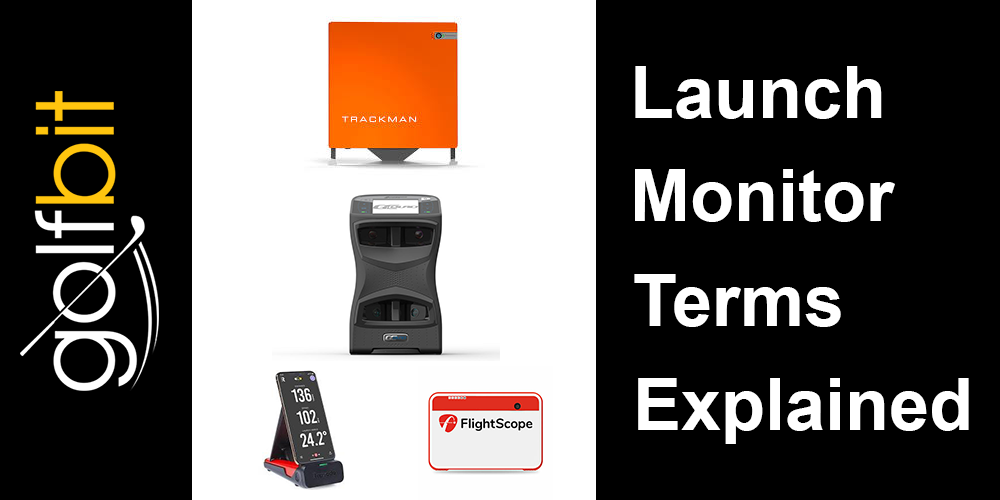Golf Launch Monitor Metrics Explained | Smash Factor, Clubhead Speed, and More
Launch monitors (like the GCQuad, Trackman, and FlightScope) have revolutionized how we can analyze and improve golfers' games.
These devices track ball flight and club delivery, outputting specific metrics to indicate what's good and what needs improvement in your swing.
But what do all of these metrics mean, and how can you use them to improve your golf game?
In this guide, we'll explain what each of these terms mean and give you insight into how to use them when evaluating your swing and ball flight.
You can jump ahead to any section of this article or any specific metric using the following links:
Basic Launch Monitor Metrics
To start, we'll cover some of the more basic launch monitor metrics. Even more basic devices will track most of these metrics.
Club Speed / Club Head Speed / Clubhead Speed
"Club Speed," which you may also see expressed as "Club Head Speed" or "Clubhead Speed," is the club head's velocity just prior to the club's impact with the ball. This metric is usually measured in miles per hour (mph).
In general, faster club speeds lead to faster ball speeds, ultimately resulting in the ball traveling further.
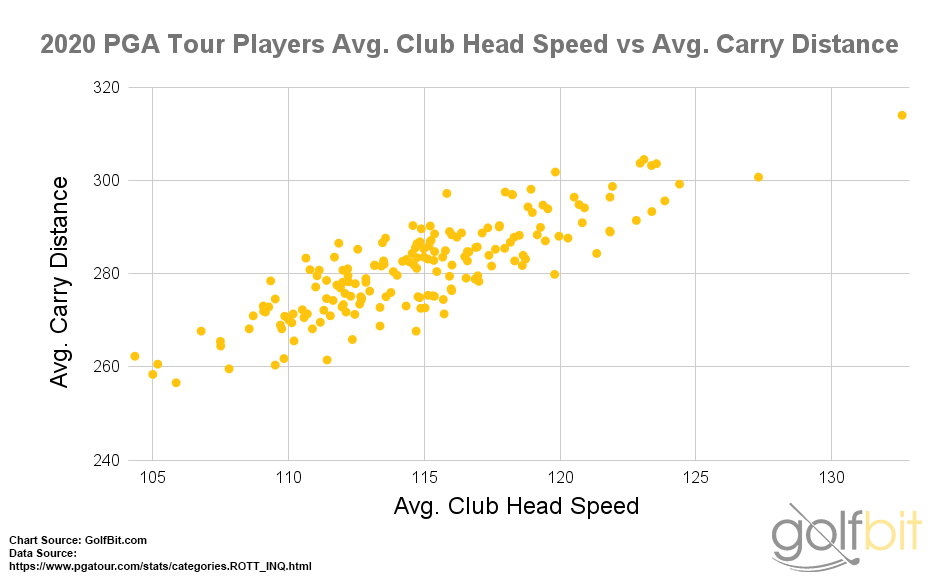
While faster golf club swingers will generally hit the ball further, other factors like how a golfer delivers their club and how much spin is placed on the ball are crucial in determining how far a golf ball will travel.
Check out the chart below for an idea of how fast different groups of golfers swing their drivers.
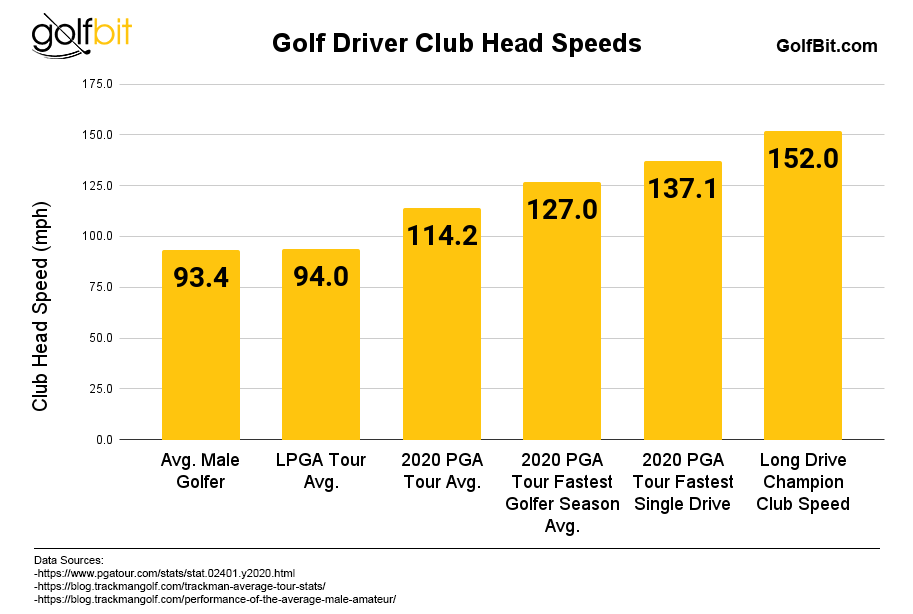
According to data from Trackman, the average male golfer swings their driver at 93.4 mph. Bear in mind this sample size includes male golfers of all age groups.
The average male golfer's driver club speed is just shy of the average among female LPGA Tour Professional golfers who clock in at 94 mph.
According to stats tracked by the PGA Tour in 2020, the average club head speed of PGA Tour Professionals is around 114 mph. Cameron Champ led the season in this category with an average club speed of 127 mph on qualifying par-4 and par-5 holes. The fastest drive of the season was achieved by Bryson DeChambeau, reaching 137.14 mph.
For an idea of what's possible at the absolute extreme end of club speed, 152 mph of club speed is roughly what it takes to win a World Long Drive competition.
As a general rule, longer clubs can be swung faster. To illustrate this, look at how PGA Tour average club speeds change for each club in the chart from Trackmanbelow.
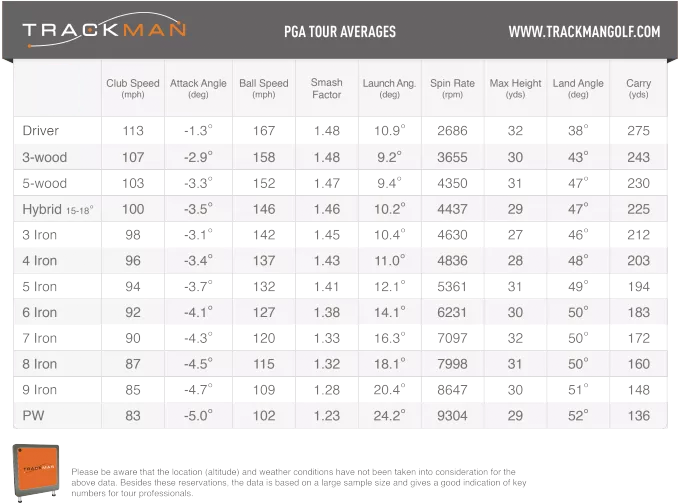 PGA Tour Cub Data Averages - Source: Trackman
PGA Tour Cub Data Averages - Source: Trackman
Ball Speed
"Ball Speed" is the velocity of the ball measured just after impact. Like club speed, ball speed is most commonly measured in miles per hour (mph).
Higher ball speed will generally lead to more distance.
Smash Factor
"Smash Factor" is a calculation of ball speed divided by club head speed.

It's excellent for determining how efficiently you are transferring energy from the club to the ball. A higher smash factor means you're more efficient.
Hitting the ball in the sweet spot of the club face and optimizing the club's delivery should be your focus for maximizing smash factor.
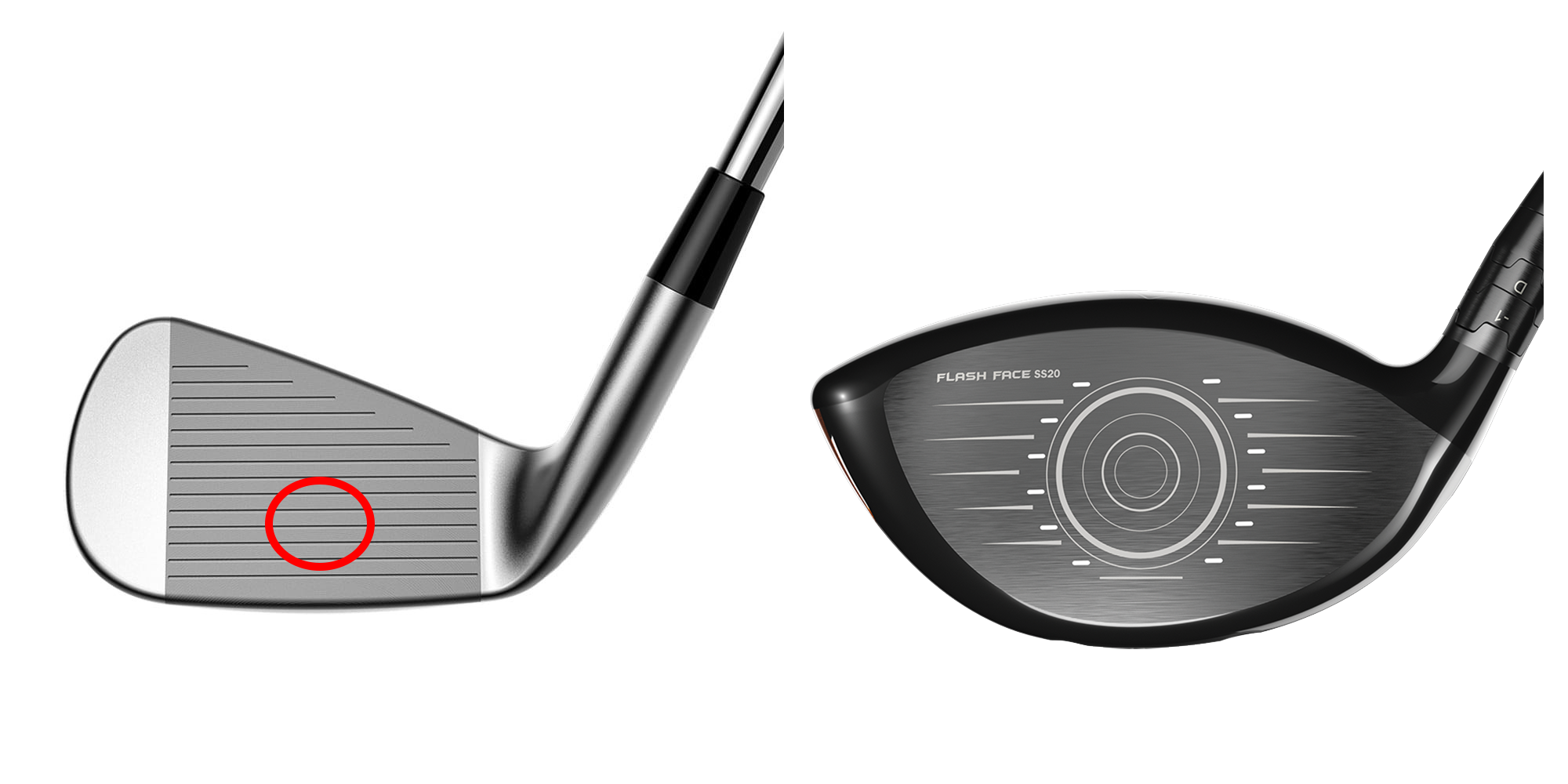 Iron and Driver Sweet Spots
Iron and Driver Sweet Spots
Looking at PGA Tour and LPGA Tour averages for each club can be used to see what smash factor numbers are possible for each club with near-optimal delivery and impact.
It's important to understand that PGA Tour club speed is not needed to achieve PGA Tour level smash factors. As the data from Trackman shows below, slower swinging female LPGA Tour golfers achieve similar or even higher smash factors than male PGA Tour players.
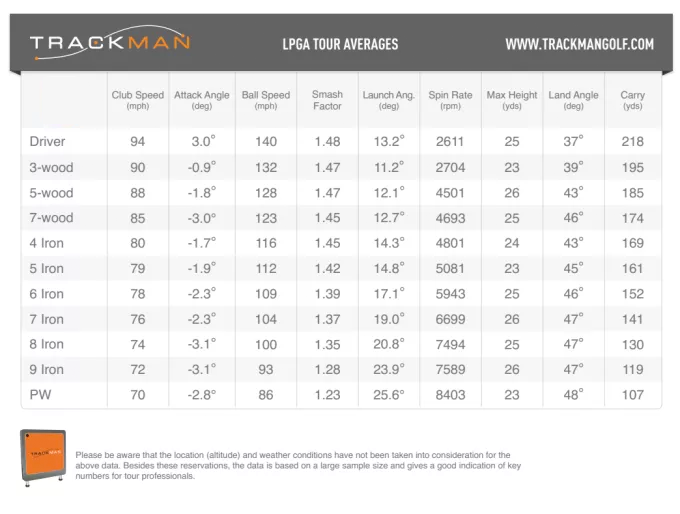 LPGA Tour Club Data Averages - Source: Trackman
LPGA Tour Club Data Averages - Source: Trackman
The higher LPGA smash factor averages for some clubs than PGA averages are likely due to professional female golfers being more likely to use cavity-backed irons vs the blade irons typically used by their male professional counterparts.
Spin Rate / Total Spin
"Spin Rate" or "Total Spin" measures how much a ball is spinning in revolutions per minute (rpm) immediately after impact.
 The amount of spin on
a ball and the axis the ball rotates around will have tremendous effects on distance, height, and shot shape.
The amount of spin on
a ball and the axis the ball rotates around will have tremendous effects on distance, height, and shot shape.
Golf clubs with higher lofts should generally have more spin. Higher club head speed should also lead to more spin, assuming the same club, delivery, and impact.
Optimal spin rates are player-dependent and have a lot to do with a golfer's swing speed. For example, golfers who swing their driver 105 mph or more should usually be around 2,000 rpm, while the average golfer or even slower swingers could be better suited to 2,500+ rpm.
A knowledgeable club fitter should be able to help you optimize your clubs' spin rates for your swing.
Carry Distance
"Carry Distance" is the distance a ball travels in the air before touching the ground. While launch monitors offer other distance metrics like "Total Distance," carry distance is far more accurate and valuable to know.
With the driver, you'll be striving to increase carry distance. As we've mentioned throughout this guide, increasing club speed and improving your delivery/impact will lead to further carry distances.
Finding your carry distances with all of your other clubs is incredibly useful. Golfers tend to overestimate how far they can hit each of their clubs, but hard data will help you select the right club for the job.
Check out how far golfers hit each of their clubs.
Total Distance
When simulating golf, "Total Distance" is an estimate of how far the ball was hit, including any bouncing and rolling after it first hits the ground. The course condition settings you input in your simulator software will heavily influence the simulated total distance.
While total distance is nice to have for simulating games and getting an idea of what you can expect from your shots including roll, we recommend focusing more on carry distance when working on your game.
Roll Distance
"Roll Distance" is the distance a ball rolls or bounces after hitting the ground for the first time.
Flight Time
"Flight Time" is a measurement of the time your golf ball stays in the air.
Advanced Launch Monitor Metrics
Now for some more advanced launch monitor metrics.
The metrics in this category can be incredibly useful to measure, giving you precise insights into your swing and club delivery. Unfortunately, most cheaper launch monitors don't track these metrics.
Launch Angle
"Launch Angle" is the angle of a golf ball's ascent relative to the ground plane. This metric is measured right after impact in degrees.

The ball's spin, the speed of the ball, and launch angle determine how high and how far a ball will travel.
Launch angle is highly correlated with dynamic loft and thus club lofts. Higher lofted clubs should lead to higher launch angles.
Good club fitters should be able to help you find the right balance of spin rate and launch angle.
Dynamic Loft / Impact Loft
"Dynamic Loft" or "Impact Loft" is the effective delivered loft of the club face at impact.
Club delivery, including angle of attack, shaft bend, club path, contact point, etc., can all affect the dynamic loft delivered.
 Dynamic Loft - Source: Trackman
Dynamic Loft - Source: Trackman
While a standard 6-iron has around 30-31 degrees of loft, PGA players deliver on average 20.2 degrees of dynamic loft with their 6-iron, according to Trackman.
Many amateur golfers fail to deloft their irons at impact like professional golfers. Dynamic loft/Impact loft measurements will show this.
Angle of Attack / Attack Angle
"Angle of Attack" or "Attack Angle" measures the upward or downward path of the club head at impact in degrees.
Shots from the ground, like iron shots, should have a slightly negative angle of attack (hitting slightly down on the ball). Good golfers will impact the ground just after impacting the ball.
When the golf ball is teed up for drives, an optimal delivery has a slightly positive angle of attack on the ball (hitting up on the ball).
 Impact Loft - Source: Foresight Sports
Impact Loft - Source: Foresight Sports
Spin-Tilt Axis
"Spin-Tilt Axis" is the axis that the ball rotates around. A ball's spin-tilt axis will determine a shot's shape and lift.
 Spin Axis - Source: Trackman
Spin Axis - Source: Trackman
A shot with a spin-tilt axis to the right (indicated with a positive number rather than negative on some launch monitors) will curve left to right. A shot with a spin-tilt axis to the left (negative number on some launch monitors) will curve right to left.
Larger numbers will be sliced and hooked shots, while smaller numbers will be fades and draws.
Club Path
"Club Path" measures the swing path of the club head relative to your target line measured in degrees.
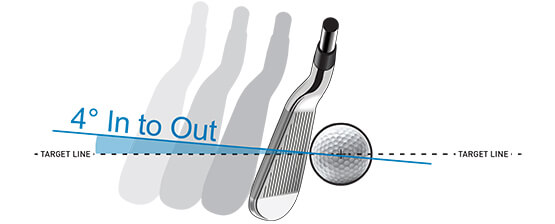 Club Path - Source: Foresight Sports
Club Path - Source: Foresight Sports
This metric will tell you if you're swinging "out-to-in" or "in-to-out."
Out-to-in club paths result in a fade, while in-to-out club paths result in a draw.
Face Angle
"Face Angle" or "Delivered Face Angle" is the direction your club face is aimed relative to your target line at impact. Your shot will generally start on a path very similar to where the face angle is aimed.
An open club face points to the right of your target, while a closed club face points to the left of your target.
Delivered Lie Angle
"Delivered Lie Angle" is a dynamic measurement of your club face relative to the ground. This will measure how "toe up" or "toe down" your club is at impact.
 Delivered Lie Angle - Source: Foresight Sports
Delivered Lie Angle - Source: Foresight Sports
Wrapping Up
Hopefully, this guide helped you get a better grasp on how to use launch monitor metrics.
To learn more golf lingo, check out 100+ Golf Terms Every Golfer Should Know.
